Community
osapeers.org
Connect your sensors to the osapiens HUB, filter from trillions of events in milliseconds and monitor sensor data and follow-up actions in real time.
The Internet of Things (IoT) is a network of physical objects, such as industrial machines, vehicles or clothing, that are equipped with sensors, software and other technologies to collect and exchange data. This enables seamless communication between employees, processes and objects.
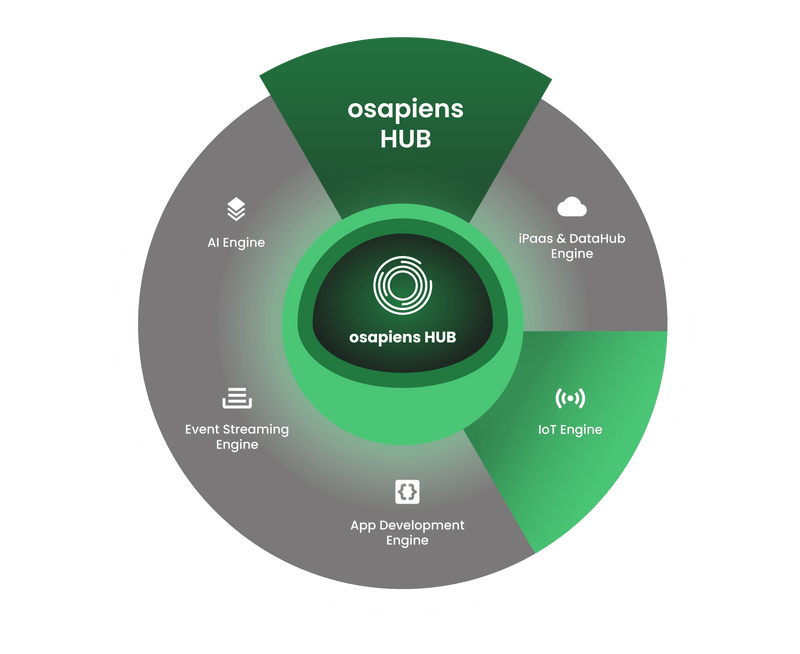
Onboarding new sensors and mapping raw data sets into legacy IoT clouds is complex and requires extensive customization. With the osapiens IoT Engine, you can quickly and easily onboard new sensors (“things”) in the osapiens HUB.
Many organizations deploy a variety of sensors that collect a large amount of data in a variety of use cases. However, their data lakes often lack business context. The osapiens IoT Engine provides a link between the data collected by sensors and business, transactional and master data.
The IoT Engine connects IoT data with the business context, enabling it to be converted into knowledge in real time.
Dynamic definition of the structure of sensor attributes as well as the automatic processing and recording of parameters
Thanks to our event streaming engine, you can react to any event in real time. It also ensures a continuous data flow, reliable data analysis and the delivery of data to the right place at the right time.
Event streaming is a technology that continuously captures, processes and distributes data as real-time events. Events are small data packets that represent an action or occurrence within a system or application. Rather than collecting data at regular intervals or in large batches, event streaming makes it possible to process data the moment it is generated.
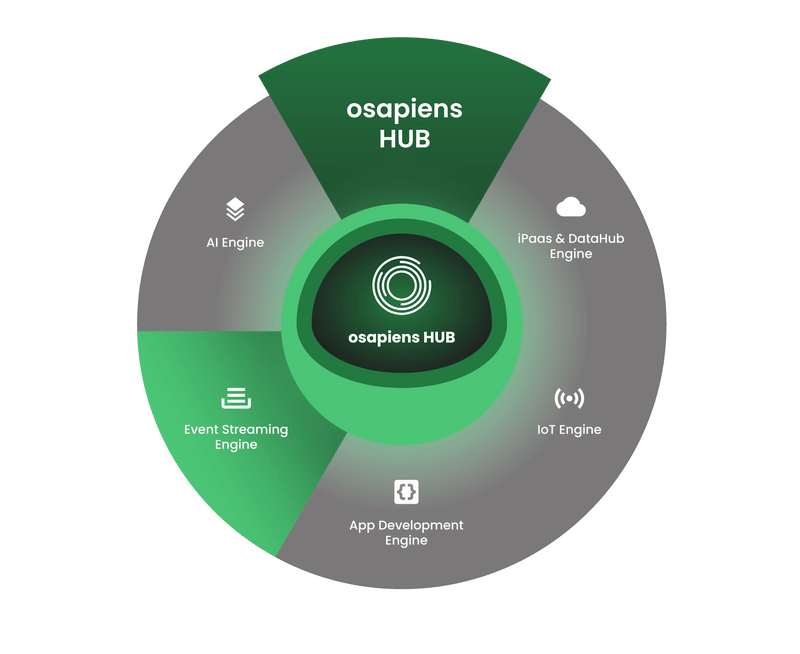
Enables the osapiens HUB to respond to events in real time
Use apps to enable users to respond immediately to data changes
Enable asynchronous processing based on a decoupled architecture, as required in microservice architectures
The Event Streaming Engine is highly scalable and offers functions for messaging, persistence, data integration and data processing. This allows you to process data in real time from thousands of sources, as well as aggregate and analyze real-time data streams to make more accurate decisions.
Use our iPaaS & DataHub Engine to map interfaces with drag and drop, connect your systems with APIs and manage and orchestrate billions of master and transaction data with our fingerprint technology.
iPaaS stands for Integration Platform as a Service and refers to a cloud-based platform that helps companies integrate various applications, data sources and processes. The integration platform enables companies to connect different software solutions that usually run on different platforms and in different environments, thus ensuring seamless data exchange and workflow.
A DataHub is a central platform or infrastructure that enables companies to collect, store and integrate data from various sources and make it available for various applications or analyses. This facilitates access to data from different systems and enables a unified view of the data.
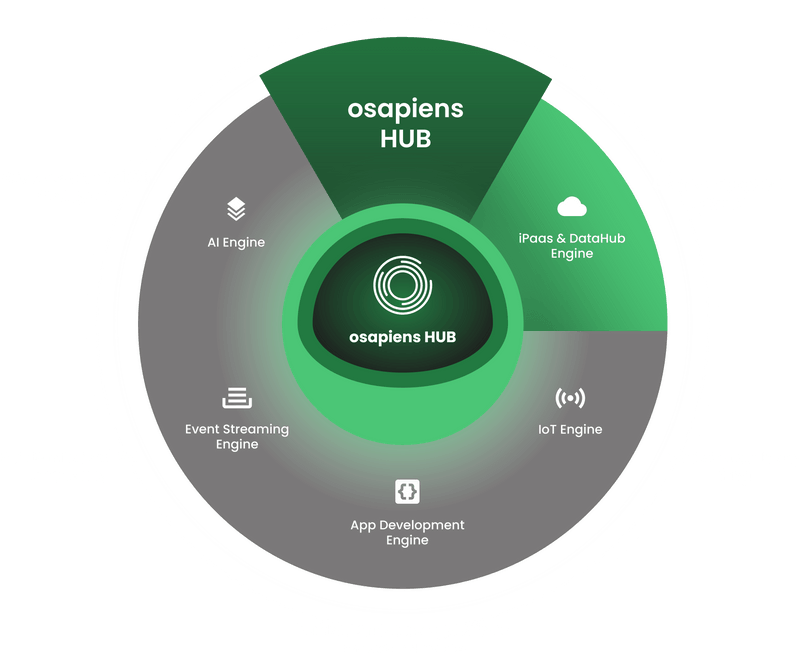
Real-time, two-way, intelligent integration of DataHub with existing business processes and systems via APIs and our unique fingerprinting technology.
Creation, management and governance of inbound and outbound APIs with automated security and thread protection at all levels.
The main source for key data elements provides user-friendly interfaces for data creation, data consumption and data search, as well as drag-and-drop mapping functions.
Real-time and delta bi-directional data synchronization is made possible by our unique fingerprinting technique. This technique requires data discovery and persistence to efficiently serve existing channels subscribed to the corresponding business data objects.
Breathe intelligence into your data: calculate predictions and forecasts based on artificial intelligence using the osapiens AI engine.
Artificial Intelligence (AI), also known as artificial intelligence (AI), is concerned with the development of systems capable of performing tasks that normally require human intelligence. These include problem solving, learning, language processing, visual perception and decision making.
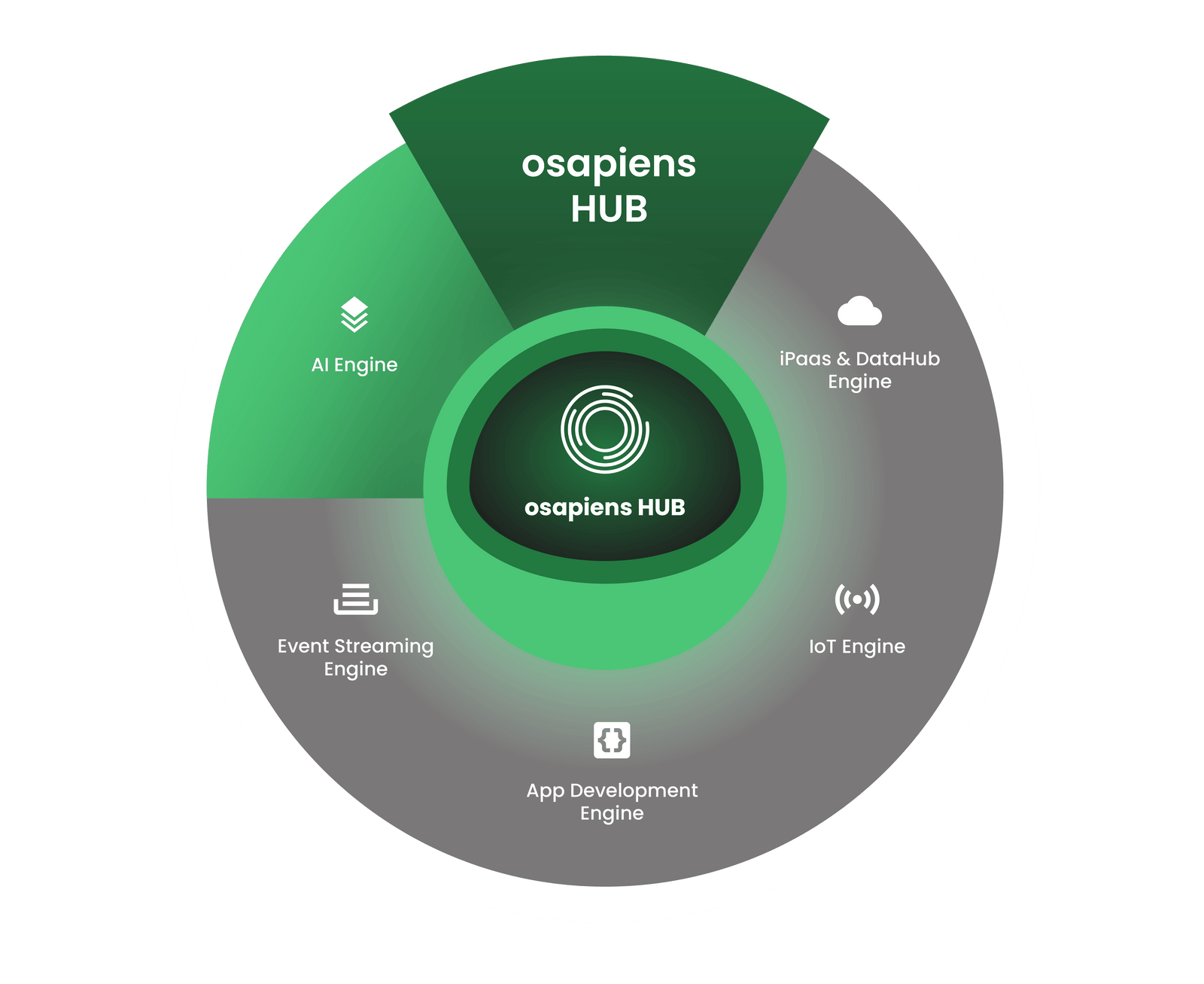
Nowadays, data is often analyzed externally on different technical platforms. This can lead to some challenges, especially if there is no deep integration into an enterprise solution, the data obtained is difficult to verify, and the processing of the data is carried out by the technical team without in-depth business understanding. Our AI engine solves these problems with two different types of deep learning.
Example: Compliance Augmentation
Goal: Identify illegal trade routes
AI output: Retail stores with high anomaly scores
Example: Delivery Team Augmentation
Goal: Deploy private individuals as delivery drivers
AI output: Next-day route suggestions
Example: Inspection Augmentation
Goal: Identify the right follow-up actions after an inspection
AI output: Classify the outputs of the seizure by action
Example: Stock Augmentation
Goal: Avoiding out-of-stock situations without endangering working capital
AI-Neuron output: Sales forecast by SKU and country for production planning
Our AI engine makes it easy to enter data and define and parameterize AI networks. Data scientists can also use Python for scripting and import their existing AI networks.
Use our app development engine to create your own apps for your osapiens HUB. Thanks to standards and common programming languages such as ReactJS and ReactNative, your frontend development can easily create your own scripts as well as define rules and APIs.
App development refers to the process of developing applications (apps) for mobile devices such as smartphones and tablets, but also for desktop computers and the web.
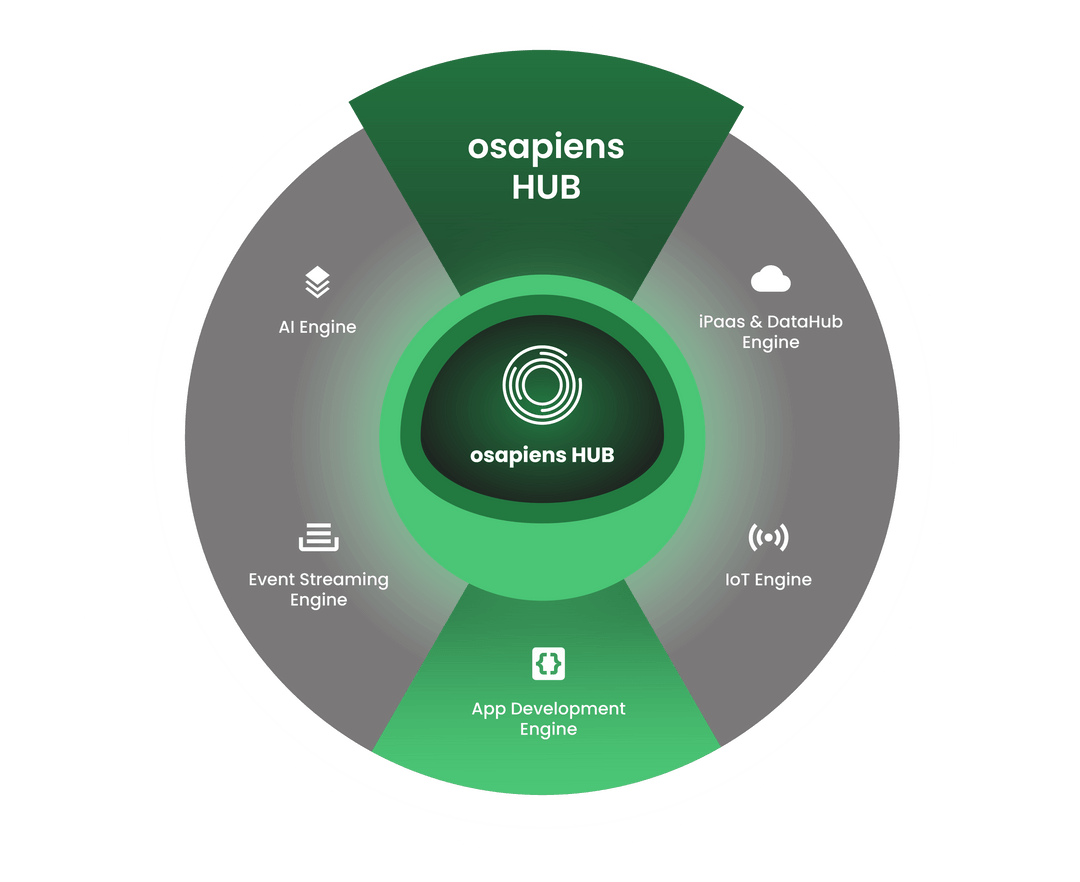
Use ReactJS, ReactNative, JavaScript, TypeScript or Python.
Use your existing cloud (AWS, Azure, GCP, OVH) or our own.
Comprehensive monitoring functions and APIs for optimal control.
Our App Development Engine uses five development languages based on standard frameworks to make frontend development as easy as possible for you: We use JavaScript and TypeScript to program input and output interfaces and processing rules. We use ReactJS to program web applications, ReactNative for mobile applications, and Python to program your own AI algorithms.